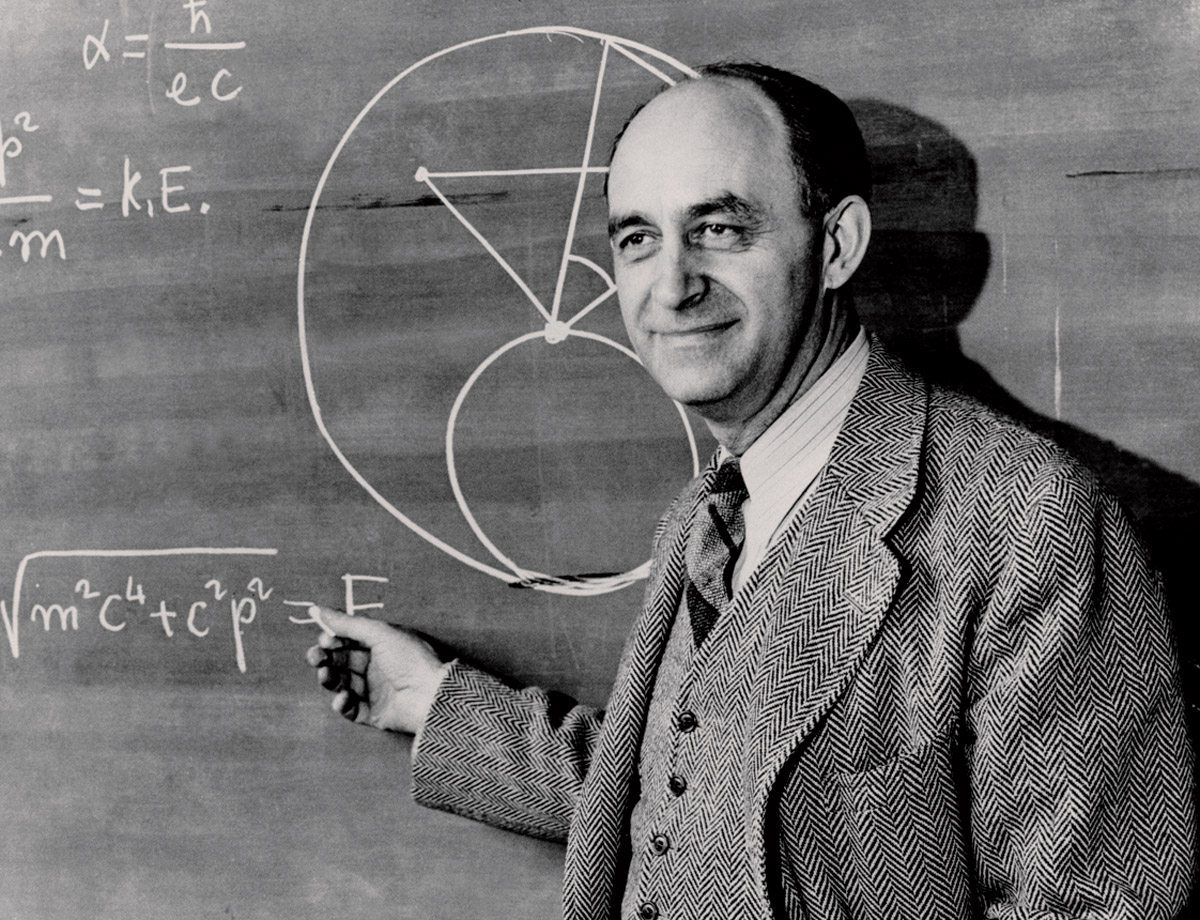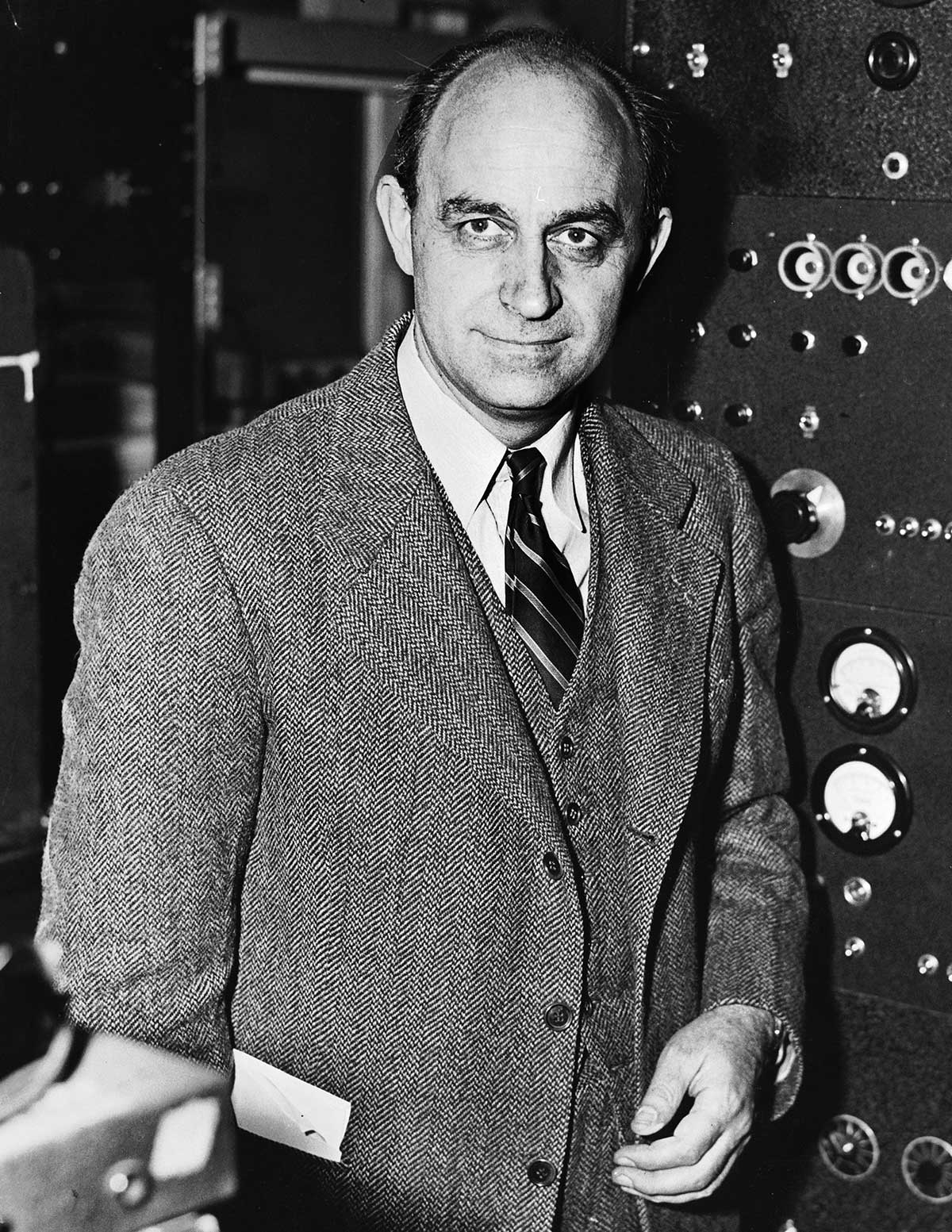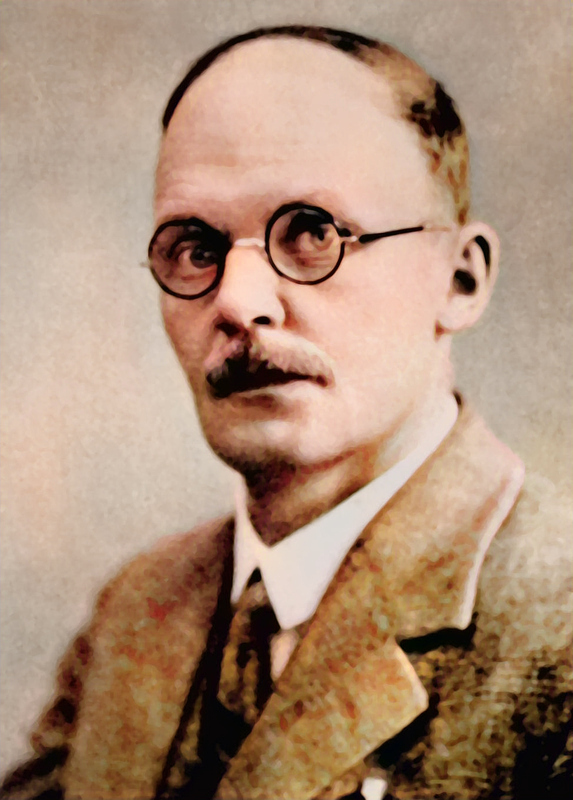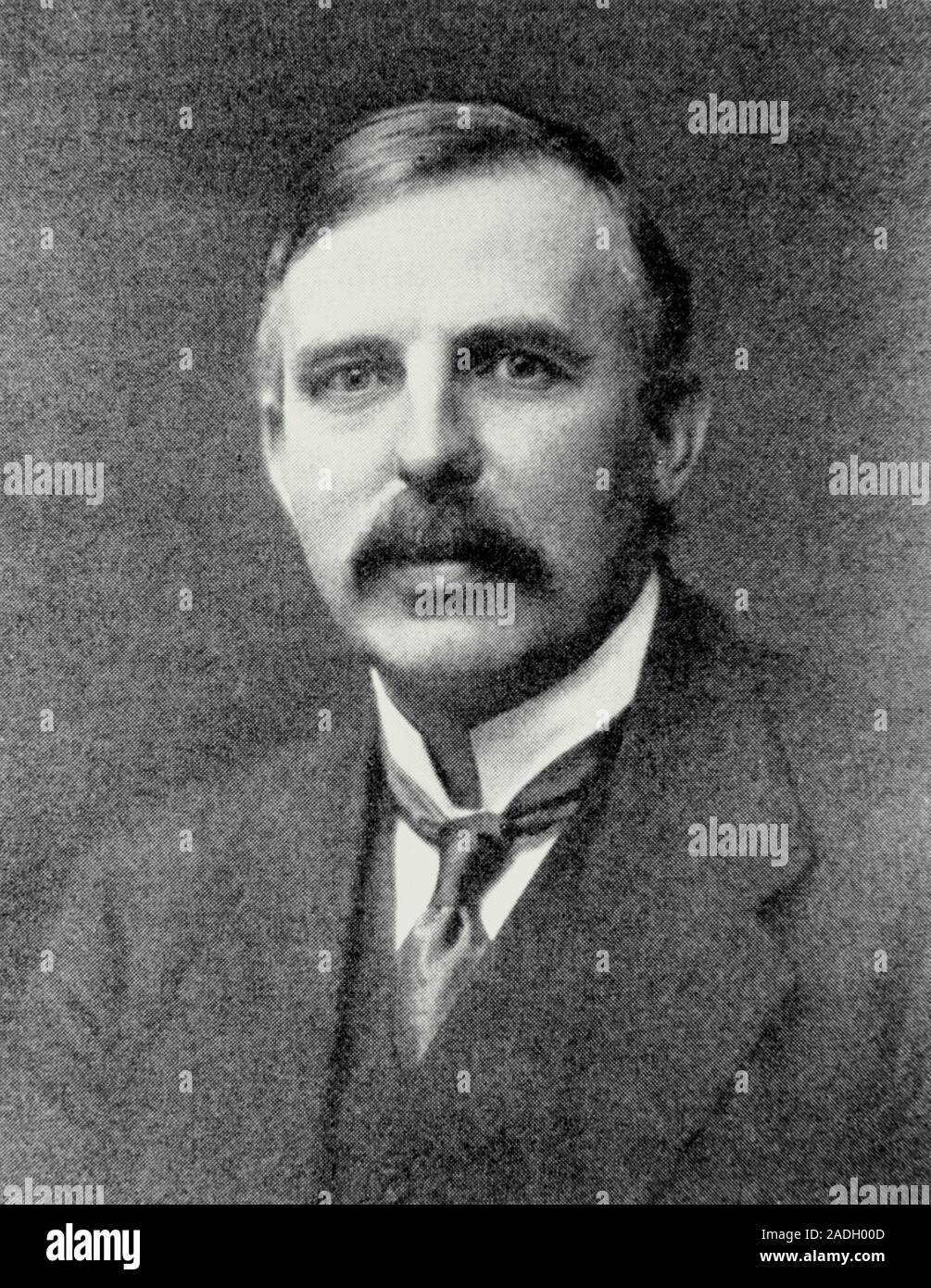Enrico Fermi: Architect of the Atomic Age
Enrico Fermi stands as one of the monumental figures in the history of science, a brilliant mind whose contributions spanned both theoretical and experimental physics. Born on September 29, 1901, in Rome, Italy, Fermi demonstrated an astonishing aptitude for mathematics and physics from an early age. His journey into the heart of atomic theory reshaped our understanding of the universe and laid the groundwork for some of the 20th century's most transformative technologies.
Early Life and Education
Fermi's childhood was marked by a thirst for knowledge that set him apart from his peers. As the son of a railroad worker and a schoolteacher, his upbringing in a modest household did little to stifle his intellectual curiosity. A pivotal moment came with the tragic death of his brother, which led Fermi to dive deep into scientific investigations as a form of solace. Self-taught in physics, Fermi soon demonstrated his extraordinary talent, absorbing complex scientific concepts with ease.
In 1918, Fermi commenced his formal studies at the Scuola Normale Superiore in Pisa, where his academic prowess flourished. Under the mentorship of professor Luigi Puccianti, he cultivated his interests in physics and advanced rapidly beyond the standard curriculum, publishing his first scientific paper before he graduated.
Revolutionizing Quantum Theory
Fermi's early work focused primarily on statistical mechanics and quantum theory. It was here that he made one of his first landmark contributions: the development of Fermi-Dirac statistics. This mathematical formulation provided a statistical description of particles that obey the Pauli exclusion principle, now known as "fermions," a class of particles named in Fermi's honor.
His introduction of the Fermi-Dirac statistics was pivotal in explaining the behavior of electrons in metals, laying the foundation for the field of semiconductor physics and thus contributing indirectly to the birth of modern electronics. This work not only solidified Fermi’s reputation as a theoretical physicist of note but also marked him as a brilliant contributor to the burgeoning field of quantum mechanics.
The Road to Nuclear Physics
In the early 1930s, Fermi's attention shifted towards nuclear physics, an area poised for groundbreaking discoveries. He led a team of young physicists in Rome, sometimes humorously referred to as the "Via Panisperna boys," after the street where their lab was located. During this period, Fermi developed what came to be known as "Fermi's theory of beta decay," proposing that weak forces – a fundamental interaction – were involved in the decay of atomic nuclei.
This innovative approach was a cornerstone in the eventual understanding of weak nuclear interactions and was critical in laying out the theoretical framework that would eventually lead to the development of the electroweak theory. His insights into beta decay proved pivotal, forming part of the theoretical backdrop that would inform subsequent generations of physicists exploring subatomic particles and their interactions.
Artificial Radioactivity and the Discovery of Neutron-Induced Reactions
Fermi's experiments in the 1930s were instrumental in demonstrating that nuclear reactions could be achieved by bombarding elements with neutrons. This technique paved the way for the discovery of numerous radioisotopes and demonstrated the potential for harnessing nuclear fission as a source of energy. Such experiments were the first steps toward the practical exploitation of nuclear reactions for energy production, a theme that would come to dominate global scientific and geopolitical landscapes.
In 1938, Fermi was awarded the Nobel Prize in Physics for his "discovery of new radioactive elements produced by neutron irradiation." His research opened the door to innovations that would transform the scientific understanding of atomic energy and set the stage for the pivotal developments in atomic weaponry and power generation during World War II and afterwards.
Immigration to the United States and World War II
Political instability in Europe, particularly the rise of Fascism in Italy and increasing anti-Semitic laws, prompted Fermi and his family to emigrate to the United States. This decision was not only a personal escape from the ideological turmoil engulfing Europe but also a significant event in the scientific community, as Fermi transplanted his academic genius to a nation eager for technological advancement.
Upon arriving in the U.S., Fermi accepted a position at Columbia University, where he continued his groundbreaking work in nuclear physics. His move to America marked the beginning of a new chapter, one that would see Fermi play a central role in the development of both peaceful and military applications of nuclear energy.
Fermi's profound understanding of atomic theory and his pragmatic approach to experimental physics would soon become crucial assets in the upcoming global conflict, as he joined the ranks of the scientists working on the Manhattan Project and further cemented his legacy as a pivotal architect of the atomic age.
Contributions to the Manhattan Project
With the dawning threat of World War II and the race to harness nuclear energy, Enrico Fermi found himself at the forefront of one of the most secretive and significant scientific endeavors in history: the Manhattan Project. This immense research and development undertaking aimed to produce the first nuclear weapons, engaging some of the era's most brilliant minds in a bid to forge the future of warfare and energy.
While at Columbia University, Fermi, together with Leo Szilard, initiated experiments that were critical in achieving the first controlled nuclear chain reaction. This achievement was a groundbreaking milestone, demonstrating that a sustained nuclear reaction was feasible. The implications of this development were profound, setting the foundation for the use of nuclear power both as an energy source and as a weapon.
In 1942, Fermi moved to the University of Chicago, where he, along with other prominent physicists, constructed the world's first nuclear reactor, Chicago Pile-1. This unassuming pile of graphite and uranium bricks was the site where, on December 2, 1942, the first self-sustaining nuclear chain reaction occurred. Fermi’s meticulous control over the experiment and his deep understanding of nuclear processes were critical to its success.
The Aftermath and Ethical Considerations
The success of the Chicago Pile-1 experiment was a turning point that catalyzed the subsequent efforts in Los Alamos, where Fermi contributed to the development of the atomic bomb. By mid-1945, the project culminated in the testing at Trinity and the bombings of Hiroshima and Nagasaki, events that irrevocably changed the course of world history.
While Fermi's contributions to these developments were invaluable, they also posed profound ethical questions. The immense destructive potential of nuclear weapons led to intense introspection within the scientific community. Fermi himself expressed concerns over the use of atomic energy for warfare, although throughout his career, he remained primarily focused on the scientific challenges rather than their moral implications.
Post-War Successes and Academic Contributions
Following the end of World War II, Enrico Fermi continued to influence the development of nuclear science significantly. He became a naturalized U.S. citizen and accepted a professorship at the Institute for Nuclear Studies, now known as the Enrico Fermi Institute, at the University of Chicago. In this role, Fermi dedicated himself to teaching and pursuing research unfettered by the pressures of wartime exigencies.
He was instrumental in mentoring a new generation of physicists, many of whom would go on to make their own impactful contributions to science. Fermi's teaching style was appreciated for its clarity and depth, and he was known for his ability to reduce complex problems to their simplest elements, a skill that endeared him to both students and colleagues alike.
Fermi’s post-war research interests were wide-ranging, covering topics such as cosmic rays, neutrinos, and particle physics. His theoretical and experimental pursuits continued to yield insights that expanded the horizons of modern physics. Notably, his work on pion-nucleon scattering offered new understanding of the forces at play within atomic nuclei, further solidifying his reputation as a scientist whose impact transcended traditional disciplinary lines.
Legacy and Honors
Enrico Fermi's influence on science and technology has left an indelible mark. In recognition of his monumental contributions, numerous awards and honors bear his name. The most significant among these is the Fermi Award, established in 1956 by the United States Atomic Energy Commission to recognize distinguished achievements in the development, use, or control of atomic energy.
Additionally, Fermi's legacy is enshrined in various institutions and scientific terms. The Fermi National Accelerator Laboratory in Illinois, affectionately known as Fermilab, serves as a leading center for particle physics research. The term "fermions," denoting particles that abide by Fermi-Dirac statistics, and other concepts in nuclear and quantum physics are also a testament to his enduring impact.
Furthermore, his life and work exemplify the power of scientific inquiry and underscore the profound effects that science can have on society. Fermi's efforts, which straddled the aisles of theoretical and applied physics, reflect a career that was as varied as it was impactful, embodying both the promise and peril of scientific advancement.
The Enduring Influence of Fermi’s Work
As the atomic age unfolded, Fermi's discoveries became the cornerstone of multiple scientific advancements that shaped modern technology and understanding of the universe. From shaping the modern electronics industry through his work on quantum statistics to pioneering nuclear energy, Fermi's contributions provided a framework from which contemporary scientists continue to draw inspiration and understanding.
Fermi’s work laid the groundwork for the peaceful harnessing of nuclear energy, a resource that has since become a significant component of the global energy supply. His pioneering spirit and scientific acumen remain a guiding beacon for physicists, ensuring a lasting legacy within both academic and applied scientific communities.
In tracing Enrico Fermi’s profound journey, from a curious mind in early 20th-century Italy to a linchpin of the nuclear age, we gain insight not only into the evolution of physics but also into the potential for scientific enterprise to alter the world in unprecedented ways. His life’s work stands as a powerful reminder of the perennial dance between discovery and responsibility that frames human progress.
Fermi’s Insights into Particle Physics
In the latter stages of his career, Enrico Fermi shifted his focus towards the burgeoning field of particle physics. This area, dealing with the smallest known constituents of matter and the fundamental forces governing them, was ripe for exploration and rich with potential for new discoveries. Fermi's work in this field once again showcased his knack for blending theoretical insight with experimental rigor.
One of Fermi's notable contributions during this period was his involvement in the study of cosmic rays, which are high-energy particles originating from outer space. These studies were instrumental in providing insights into the interactions at subatomic levels, and they played a significant role in understanding particle collisions and the behavior of neutrinos. Fermi’s work with cosmic rays furthered the scientific community's grasp of the processes fueling stellar phenomena and contributed to the broader comprehension of the universe's fundamental workings.
Fermi also developed what is now known as "Fermi's theory of cosmic ray acceleration," which sought to explain how cosmic rays achieve their immense energies through interactions with magnetic fields in space. This theory has since been pivotal in the ongoing exploration of high-energy astrophysics, emphasizing Fermi’s lasting impact on the field.
Fermi's Pedagogical Legacy
Beyond his own research, Enrico Fermi's influence is markedly evident in his role as a teacher and mentor. His pedagogical style was characterized by clarity, intuition, and practicality, earning him the admiration of students and aspiring physicists around the world. He was renowned for his ability to distill complex ideas into comprehensible concepts without sacrificing depth or detail, a skill that made his lectures compelling and accessible.
Fermi’s legacy as a teacher can be seen in the achievements of his students, who have themselves made substantial contributions to science. Among these were several individuals who played pivotal roles in advancing physics, including Nobel laureates such as Chen Ning Yang and Tsung-Dao Lee, who extended Fermi’s insights into new frontiers.
His commitment to nurturing new talent ensured that his intellectual legacy would endure, with generations of physicists continuing to draw upon the principles and methods he espoused. Fermi's approach to science education, emphasizing thorough understanding backed by empirical evidence, helped to shape academic curricula and research methods that are still in use today.
Personal Legacy and Influence
Enrico Fermi's legacy transcends the boundaries of theoretical constructs and experimental breakthroughs; his personal qualities as a collaborator and thinker have long been celebrated by those who worked alongside him. Known for his humility, Fermi was as unassuming as he was brilliant—a man whose passion for science exceeded any desire for personal aggrandizement. His collaborative spirit and openness to diverse ideas fostered an environment where innovation thrived and where scientific inquiry was pursued for its own sake.
Fermi's impact is also discernible outside the scientific community. The implications of his work on nuclear energy and atomic weaponry have provoked deep ethical considerations, shaping global discussions about the responsible use of scientific discovery. These debates continue to inform policy-making and societal perspectives on nuclear energy and highlight the inherent responsibilities that scientists bear when their work has powerful and far-reaching consequences.
Fermi's journey from a precocious student in Italy to a pioneer of nuclear physics and a key figure in one of the most consequential scientific projects of the 20th century is a testament to the transformative power of dedication to scientific pursuit. His work laid the foundation upon which much of contemporary physics is built, emphasizing the critical importance of both exploration and ethics in the scientific enterprise.
Conclusion: The Undying Spark of Curiosity
Enrico Fermi’s life and career underscore the monumental influence that one individual can have on both the academic landscape and the global society at large. His innovations have had lasting impacts, affecting numerous aspects of modern life including energy production, military strategy, and medical technology through nuclear medicine. More importantly, they have advanced our understanding of the universe and our place within it.
Fermi’s journey continues to inspire across scientific disciplines, embodying the relentless curiosity and pursuit of knowledge that define the scientific spirit. He symbolizes the union of theory and practice, showing how groundbreaking discoveries often arise from the delicate balance between creative thought and empirical validation.
In reflecting on Fermi’s legacy, it becomes evident that scientific progress is not merely about technological advancement but also involves grappling with profound ethical questions. His career encourages current and future scientists to pursue truth with integrity, ensuring that the fruits of their labor benefit humanity in profound and positive ways.
As we continue to explore the frontiers of physics, Enrico Fermi’s enduring influence serves as a guiding light, affirming the boundless potential of human intellect and the everlasting quest for understanding the mysteries of nature. His life story remains a tribute to the pursuit of excellence, innovation, and the significant impact of a life devoted to scientific exploration.











Comments